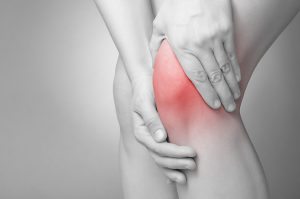You might be feeling hesitant or dubious about the health benefits of medical marijuana. If you, like many Americans, were raised to regard marijuana as a dangerous drug with no benefits or positive qualities, it’s completely natural to resist the idea that Cannabis could actually be good for you. In fact, many of the patients I treat are initially skeptical about the medical merits of Cannabis. It is perfectly okay (and even encouraged) to want to see what objective, scientific, peer-reviewed medical studies actually say about medical marijuana before you decide to make the leap yourself. An informed patient is an empowered patient.
That’s precisely why I’ve created this compilation of medical Cannabis study excerpts. I’ve included only recent studies conducted within the past 15 years, with dates ranging from 2001 to 2014. The data has been culled from an international body of peer-reviewed medical journals. I’ve included findings about a wide variety of medical conditions – namely cancer, HIV/AIDS, glaucoma, ALS, and MS – as well as effects such as pain and nausea. All studies have been sourced with links in the interest of transparency.
It is my hope that these compiled medical findings will help set your mind at ease. If you have any questions about whether you qualify for medical marijuana, I invite you to call me at (617) 477-8886 to set up a private consultation with Inhale MD.

Does Marijuana Kill Cancer and Inhibit Tumor Growth?
There’s a common myth about marijuana that “Cannabis cures cancer.” Unfortunately, this is a wild exaggeration. Marijuana does not “cure cancer,” nor is Cannabis a substitute for traditional chemotherapy treatment, which remains the most reliable and effective method of treating cancerous growths. Should you ever come across a website or video claiming that a topical cream can “dissolve” or “reverse” aggressive skin cancers like melanoma, steer clear: these claims are patently untrue and exist only to scam people into wasting their money on useless products.
That being said, many studies have demonstrated that marijuana does appear to have cancer-fighting properties with regard to certain forms of cancer. Cannabis can also help cancer patients manage the pain and nausea caused by chemotherapy.
- Study – “Cannabinoid Action Induces autophagy-mediated cell death through stimulation of ER stress in human glioma cells”
- Journal – Journal of Clinical Investigation
- Publication Date – May, 2009
- Findings – “Here we demonstrate that delta(9)-tetrahydrocannabinol (THC), the main active component of marijuana, induces human glioma [type of brain tumor] cell death through stimulation of autophagy [cell death]… These findings describe a mechanism by which THC can promote the autophagic death of human and mouse cancer cells and provide evidence that Cannabinoid administration may be an effective therapeutic strategy for targeting human cancers.”
- Study – “Enhancing the Activity of Cannabidiol and Other Cannabinoids In Vitro Through Modifications to Drug Combinations and Treatment Schedules”
- Journal – Anticancer Research
- Publication Date – October, 2013
- Findings – “We explored the activity of six Cannabinoids, used both alone and in combination in leukaemic cells. Cannabinoids were cytostatic [killed cancer cells] and caused a simultaneous arrest at all phases of the cell cycle.”
- Study – “Multicenter, Double-Blind, Randomized, Placebo-Controlled, Parallel-Group study of the Efficacy, Safety, and Tolerability of THC:CBD Extract and THC Extract in Patients with Intractable [Persistent] Cancer-Related Pain”
- Journal – Journal of Pain and Symptom Management
- Publication Date – February, 2010
- Findings – “This study compared the efficacy of a tetrahydrocannabinol:cannabidiol (THC:CBD) extract, a nonopioid analgesic endocannabinoid system modulator, and a THC extract, with placebo, in relieving pain in [177] patients with advanced cancer… Twice as many patients taking THC:CBD showed a reduction of more than 30% from baseline pain NRS score when compared with placebo (23 [43%] vs. 12 [21%]).”
How Cannabis Can Help with Nausea, Weight Gain, and Appetite
It’s a common joke that marijuana induces the “munchies.” While “munchies” is hardly a medical term, the connection between Cannabis and appetite stimulation has been thoroughly documented by researchers. This effect can benefit two distinct groups of patients: (1) patients who suffer from eating disorders, such as anorexia nervosa, and (2) patients who experience chronic nausea and/or gastrointestinal irritation caused by HIV/AIDS, cancer and chemotherapy treatments, or conditions affecting the digestive system such as Crohn’s Disease and ulcerative colitis.
- Study – “Dronabinol and Marijuana in HIV-Positive Marijuana Smokers: Caloric Intake, Mood, and Sleep”
- Publication Date – August, 2007
- Findings – “As compared with placebo, marijuana and dronabinol dose dependently increased daily caloric intake and body weight in HIV-positive marijuana smokers. All Cannabinoid conditions produced significant intoxication, except for low-dose dronabinol (5 mg); the intoxication was rated positively (e.g. “good drug effect”) with little evidence of discomfort and no impairment of cognitive performance. Effects of marijuana and dronabinol were comparable, except that only marijuana (3.9% THC) improved ratings of sleep.”
- Study – “Cannabinoids: Potential Anticancer Agents”
- Journal – Nature Reviews Cancer
- Publication Date – October, 2003
- Findings – “Cannabinoids – the active components of Cannabis sativa and their derivatives – exert palliative effects in cancer patients by preventing nausea, vomiting and pain and by stimulating appetite. In addition, these compounds have been shown to inhibit the growth of tumour cells in culture and animal models by modulating key cell-signalling pathways. Cannabinoids are usually well tolerated, and do not produce the generalized toxic effects of conventional chemotherapies.”

Treating the Effects of Glaucoma, MS, and ALS
The term glaucoma describes a group of diseases which collectively degrade the optic nerve, eventually resulting in partial or total vision loss. Glaucoma can affect anyone, but older adults are at the greatest risk.
- Study – “Cannabinoids and Glaucoma”
- Journal – The British Journal of Ophthalmology
- Publication Date – May, 2004
- Findings – “Cannabinoids effectively lower the intraocular pressure (IOP) and have neuroprotective actions. Thus, they could potentially be useful in the treatment of glaucoma.”
- Study – “Cannabinoids in the Treatment of Glaucoma”
- Journal – Pharmacology & Therapeutics
- Publication Date – August, 2002
- Findings – “A number of drugs are available to lower intraocular pressure (IOP), but, occasionally, they are ineffective or have intolerable side-effects for some patients and can lose efficacy with chronic administration. The smoking of marijuana has decreased IOP in glaucoma patients. Cannabinoid drugs, therefore, are thought to have significant potential for pharmaceutical development.”
Multiple Sclerosis (MS) affects an estimated 400,000 people across the United States. MS causes damage to myelin, the substance which insulates nerve cells, leading to muscle tremors and muscle spasms, difficulty speaking, and paralysis.
- Study – “Randomized Controlled Trial of Cannabis-Based Medicine in Spasticity Caused by Multiple Sclerosis”
- Journal – The European Journal of Neurology
- Publication Date – March, 2007
- Findings – “A total of 189 subjects with definite MS and spasticity were randomized to receive daily doses of active [THC] preparation… or placebo… in a double-blind study over six weeks. The primary efficacy analysis… showed the active [THC] preparation to be significantly superior… We conclude that this CBM [Cannabis-Based Medicine] may represent a useful new agent for treatment of the symptomatic relief of spasticity in MS.”
- Study – “Prospects for New Cannabis-Based Prescription Medicines”
- Journal – Journal of Cannabis Therapeutics
- Publication Date – 2001
- Findings – “Some patients with multiple sclerosis who smoke Cannabis report relief of spasm and pain after the second or third puff of a Cannabis cigarette. This implies very rapid transit to, and absorption into the central nervous system. The time involved is seconds rather than minutes.”
The popularity of physicist Stephen Hawking has helped to increase public awareness about ALS, also known as Amyotrophic Lateral Sclerosis or Lou Gehrig’s Disease. ALS affects about 20,000 Americans each year, causing impaired mobility which eventually progresses into paralysis. ALS is a fatal condition, though the ALS Association reports the disease stops progressing or even reverses in a small number of people.
- Study – “Medical Marijuana Utilization and Perceived Therapeutic Value in Patients with ALS”
- Journal – Neurology
- Publication Date – April, 2014
- Findings – “The survey was given to 127 [ALS] patients and 102 were completed (93% response rate). In total, 21% reported current or prior use of medical marijuana to treat their ALS symptoms. Of that 21%, large majorities considered it very effective in providing appetite stimulation (75%), aiding sleep (65%), relieving anxiety (80%), relieving depression (70%), and providing muscle relaxation (60%).”
If you’re living with any of the medical conditions described in this article, or other conditions including Parkinson’s Disease, hepatitis C, chronic insomnia, or rheumatoid arthritis, medical Cannabis may be able to help provide additional relief in conjunction with traditional treatment. To talk about whether medical marijuana could be right for your condition, call Dr. Tishler at (617) 477-8886.
MA specifically qualified conditions:
- Cancer
- Glaucoma
- Acquired immune deficiency syndrome (AIDS) or HIV positive status
- Hepatitis C
- Amyotrophic lateral sclerosis (ALS)
- Crohn’s disease
- Parkinson’s disease
- Multiple sclerosis
And other debilitating conditions as determined in writing by a qualifying patient’s physician, which may include:
- Chronic back pain
- Rheumatoid Arthritis
- Insomnia
- Anorexia
- Anxiety
- Depression
